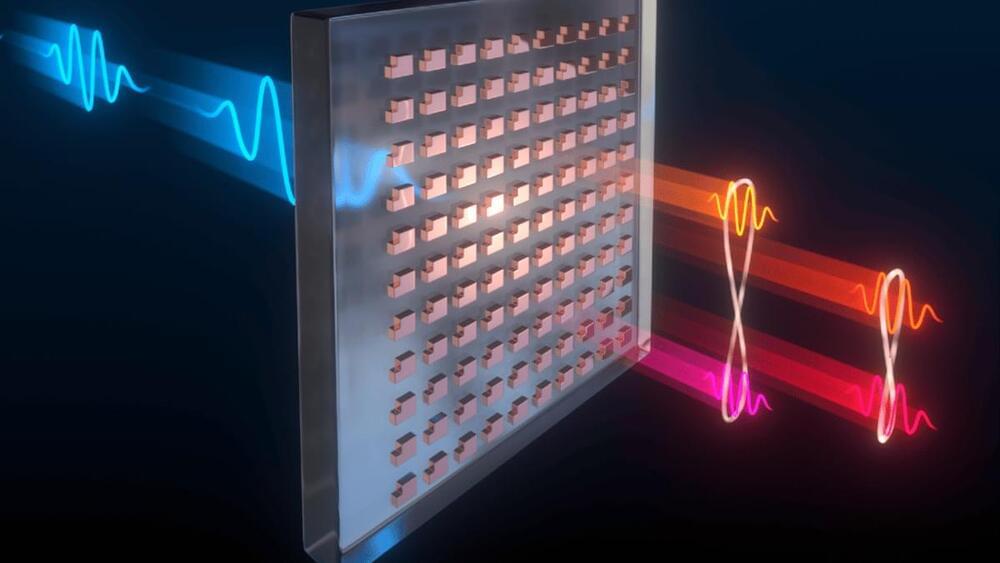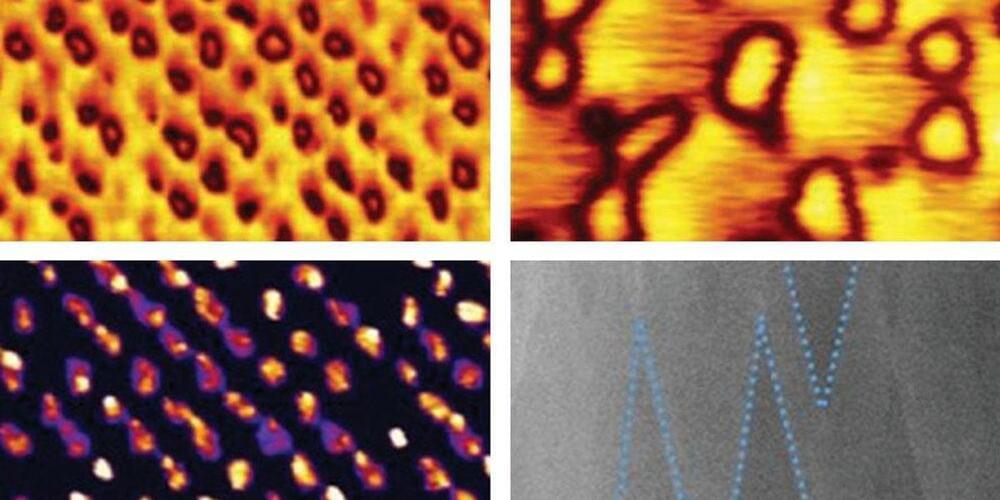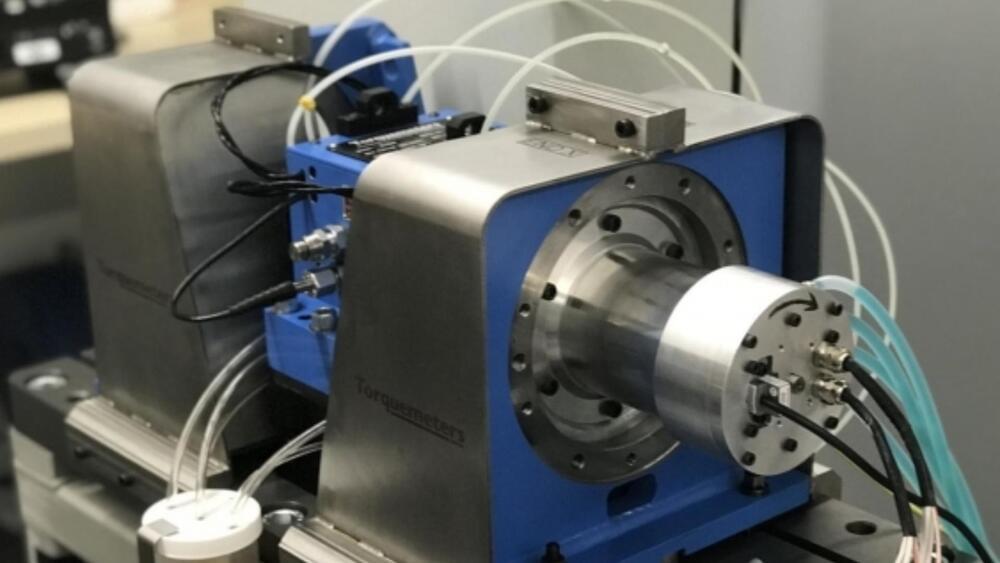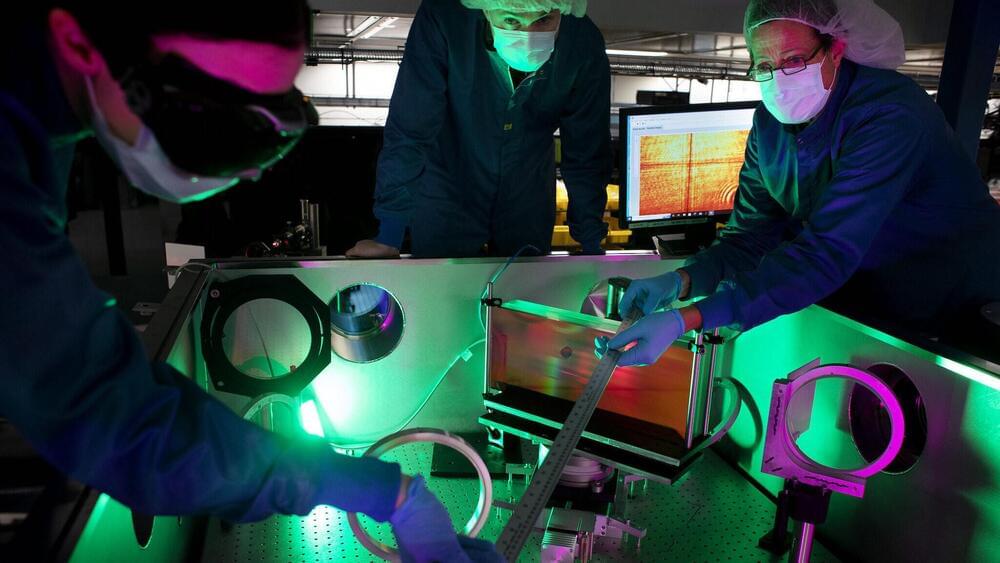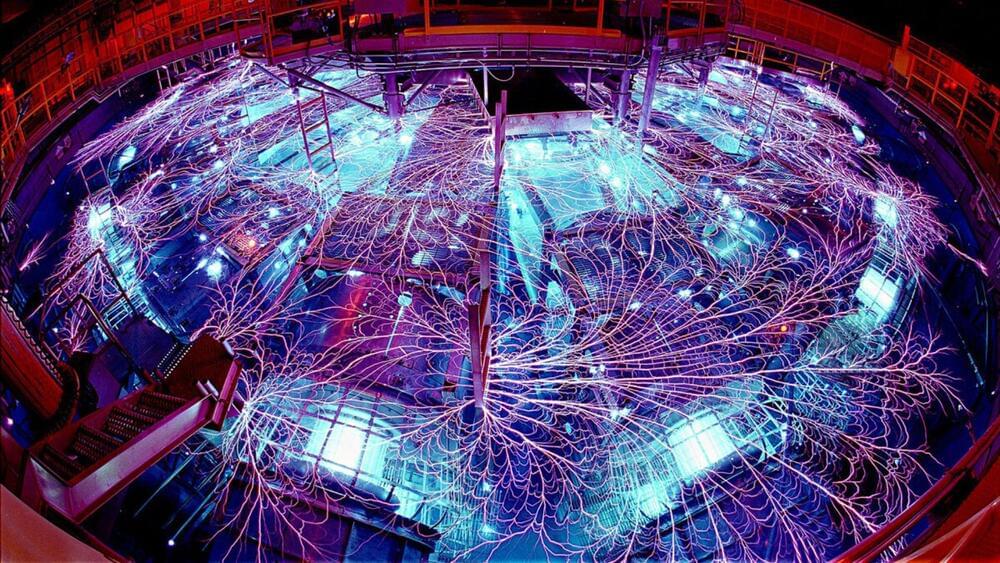Black holes aren’t just the densest masses in the Universe, but they also spin the fastest of all massive objects. Here’s why it must be so.
Scientists at Sandia National Laboratories and the Max Planck Institute have developed a way to produce a web of quantum entangled photons using a far more simple setup than usual. The key is a precisely patterned surface 100 times thinner than paper, which could replace a roomful of optical equipment.
Quantum entanglement is the bizarre-sounding phenomenon where two particles can become so entwined together that manipulating one will instantly affect its partner, no matter how far apart they may be. This forms the basis for emerging technologies like quantum computing and quantum encryption.
The problem is, generating entangled groups of photons can be tricky, and is usually done with large arrays of lasers, specialized crystals, and other optical equipment. But the Sandia and Max Planck team has a much simpler setup – a metasurface.
SpaceX has had many successful launches, compared with Boeing, which hasn’t flown its Starliner rocket yet, NASA’s administrator told Newsweek.
Physicists have discovered a material in which atoms are arranged in a way that so frustrates the movement of electrons that they engage in a collective dance where their electronic and magnetic natures appear to both compete and cooperate in unexpected ways.
Led by Rice University physicists, the research was published online today in Nature. In experiments at Rice, Oak Ridge National Laboratory (ORNL), SLAC National Accelerator Laboratory, Lawrence Berkeley National Laboratory (LBNL), the University of Washington (UW), Princeton University and the University of California, Berkeley, researchers studied pure iron-germanium crystals and discovered standing waves of fluid electrons appeared spontaneously within the crystals when they were cooled to a critically low temperature. Intriguingly, the charge density waves arose while the material was in a magnetic state, to which it had transitioned at a higher temperature.
“A charge density wave typically occurs in materials that have no magnetism,” said study co-corresponding author Pengcheng Dai of Rice. “Materials that have both a charge density wave and magnetism are actually rare. Even more rare are those where the charge density wave and magnetism ‘talk’ to each other, as they appear to be doing in this case.”
Atomically thin materials such as graphene have drawn attention for how electrons can race in them at exceptionally quick speeds, leading to visions of advanced new electronics. Now scientists find that similar behavior can exist within two-dimensional sheets, known as domain walls, that are embedded within unusual crystalline materials. Moreover, unlike other atomically thin sheets, domain walls can easily be created, moved, and destroyed, which may lead the way for novel circuits that can instantly transform or be repaired on command.
In the new study, researchers investigated crystalline lithium niobate ferroelectric film just 500 nanometers thick. Electric charges within materials separate into positive and negative poles, and ferroelectrics are materials in which these electric dipoles are generally oriented in the same direction. The electric dipoles in ferroelectrics are clustered in regions known as domains. These are separated by two-dimensional layers known as domain walls.
The amazing electronic properties of two-dimensional materials such as graphene and molybdenum disulfide have led researchers to hope they may allow Moore’s Law to continue once it becomes impossible to make further progress using silicon. Researchers have also investigated similarly attractive behavior in exceptionally thin electrically conducting heterointerfaces between two different insulating materials, such as lanthanum aluminate and strontium titanate.
The original artwork in this episode is “Imago Humanitas” by Jason Reza Jorjani: https://jasonrezajorjani.com/work#/imago-humanitas/
Prometheism Website: https://prometheism.com.
Jason Reza Jorjani at Patreon: https://www.patreon.com/JasonRezaJorjani.
Jason Reza Jorjani at PayPal: https://www.paypal.com/paypalme/JasonRezaJorjani.
JRJ Books: https://www.amazon.com/s?i=stripbooks&rh=p_27%3AJason+Reza+J…atfound-20
This is also the fastest IPMSM built with commercialized lamination materials.
Researchers at the University of New South Wales Sydney have developed a new electric motor that can clock 100,000 revolutions per minute. The high power density achieved as a result of this new design could help reduce the weight of electric vehicles (EVs) and thereby increase their range, a university press release said.
EV makers around the world have been looking for ways to address the range anxiety of their battery-powered vehicles. One of the options is to increase the size of the battery pack, which also increases the weight of the vehicle, creating more problems to solve.
To begin with, it will only run at a fraction of its eventual three-quadrillion-watt maximum output.
A laser at the University of Michigan, which is set to be the most powerful in the United States, is preparing to send its first laser pulses into an experimental target, a press statement explains.
The laser, named the Zetawatt-Equivalent Ultrashort pulse laser System, or Zeus, will be used to investigate quantum physics as well as outer space. It is hoped studies using the laser will also help to build new technologies in electronics and medicine.
The Starlink dish can withstand extreme temperatures as low as-22 degrees Fahrenheit.
SpaceX’s Starlink internet service is now available in one of the most remote regions of the world: Antarctica, making the service available on all seven continents.
In a tweet on Wednesday, the National Science Foundation announced the milestone, stating that scientists with the U.S. Antarctic Program were “over the moon” and have been testing out a Starlink dish at the McMurdo Station, a U.S. research facility based on an island right off the coast of Antarctica to supply increased internet bandwidth.
So far, Chinese scientists have achieved a reaction running at a slightly cooler 70 million degrees celsius for more than 17 minutes.
China aspires to produce unlimited clean energy through nuclear fusion by 2028.
The “world’s largest” pulsed-power plant will be built in Chengdu, Sichuan province, according to Professor Peng Xianjue of the Chinese Academy of Engineering Physics, The Independent reported on Wednesday.

